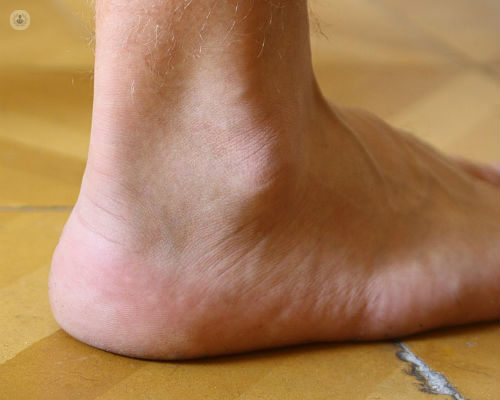Sprained ankle
Written by:
What is a sprained ankle and what grades are there?
A sprained ankle is ankle ligament injury. Ligaments can be injured at different levels. A first degree would be the simple sprain, which is a distension of the ligament, a second degree would be a partial rupture of this ligament and a third degree would be a complete rupture of a part of these ligaments.
What symptoms allow us to recognize the degree of ligamentous injury?
Basically 3 symptoms appear: swelling, pain and lameness. Only an expert can assess whether this swelling, pain and lameness correspond to a simple sprain, type 1, or correspond to a much more complex injury. Therefore neither the swelling, nor the pain, nor even the limp are indicative of the injury being more or less serious.

What is the recommended behavior against an ankle ligament injury?
The ankle sprain is a very frequent injury to the point that there is talk of an epidemic within the sports world. As we have said before, not all sprains have the same significance because it depends on the degree of injury of this ligament, therefore it is important to make the diagnosis and make the appropriate treatment. A badly healed sprain, as it is said in this slang, will cause a functional deficit of this ankle and therefore will jeopardize the future of this athlete. We insist that the diagnosis of ankle sprain in different grades is essential to establish a correct diagnosis and therefore also an appropriate treatment for each patient.
What's new in the treatment of these injuries?
In the low-grade, grade 1 sprains, we follow the conventional treatment, rest, immobilization and early physiotherapy, as is normally done. But for sprains of grade 2 or grade 3 and especially for badly healed sprains we use arthroscopy. Arthroscopy will allow us to see these ligament injuries but also associated ones such as cartilage lesions or synovial lesions, which are ultimately responsible for this ligament, although it is well treated, does not work well. Arthroscopy will allow us to resect or regularize the injuries associated with the ligament injury. Lately also, with arthroscopy we can make a direct repair of ligament injuries with a direct suture of this or even a meeting of this ligament at the point of bone that had been injured, or in much more evolved, more chronic cases, use ligament plasties, usually tissue banks, just as we did in the knee and other joints to reconstruct these ligaments that have deteriorated over time.


